Students Give Thumbs Up for Brain Based Teaching
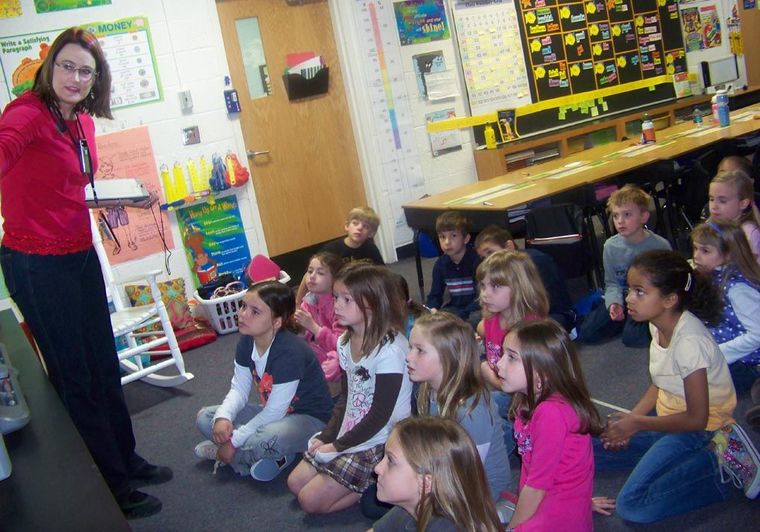
This article in The Edmond Sun describes the efforts of a local teacher to make metacognition come alive in her second-grade classroom. She explicitly teaches students how the brain works. In one lesson students use pipe cleaners to represent neural pathways and create a class brain, making visible learning pathways by connecting concepts from one… Read More ›
“The Boss of My Brain”: Explicit Instruction in Metacognition Puts Students in Charge of Their Learning
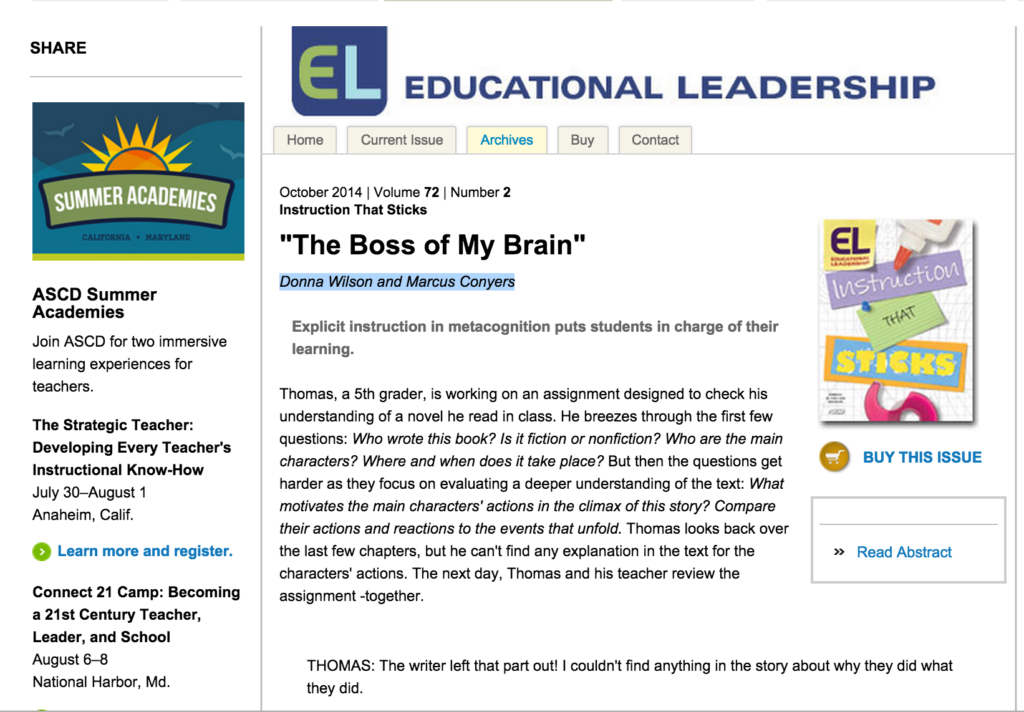
This article in Educational Leadership, highlights the importance of teaching students of all ages metacognition strategies. It discusses setting the stage by teaching students about neuroplasticity—that they can teach themselves to “become smarter” through learning. It also provides specific strategies and examples for teaching metacognitive skills at the elementary, middle, and high school levels. Lastly,… Read More ›
SoundOut
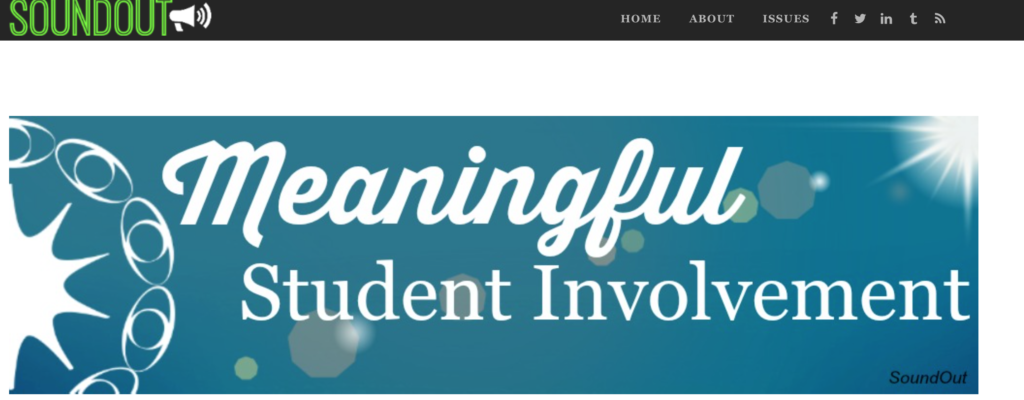
This organization works with schools to build student voice through meaningful student involvement. Its website offers many resources for students, teachers, administrators, and community leaders working on school reform. The issues section contains overviews of key concepts including meaningful student involvement, student voice, student engagement, and student/adult partnerships. The tools section includes toolboxes on meaningful student… Read More ›
A Parents Guide to 21st Century Learning
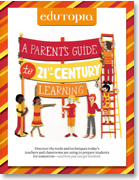
This short guide introduces parents to 21st century learning in all grade levels. Through short vignettes it provides examples of what classrooms today look like at the elementary, middle, and high school levels. In particular it explores how the skills of collaboration, creativity, communication, and critical thinking are taught alongside content at each age level.… Read More ›
Student Voice Matters
This national campaign, launched by Youth on Board, encourages schools to give students opportunities to provide feedback on teacher practice and classroom culture in order to improve teaching and build student-teacher relationships. The site includes a dynamic gallery of students sharing why they feel student voice matters in the classroom as well as a video… Read More ›
Student Experiences with Student Centered Learning
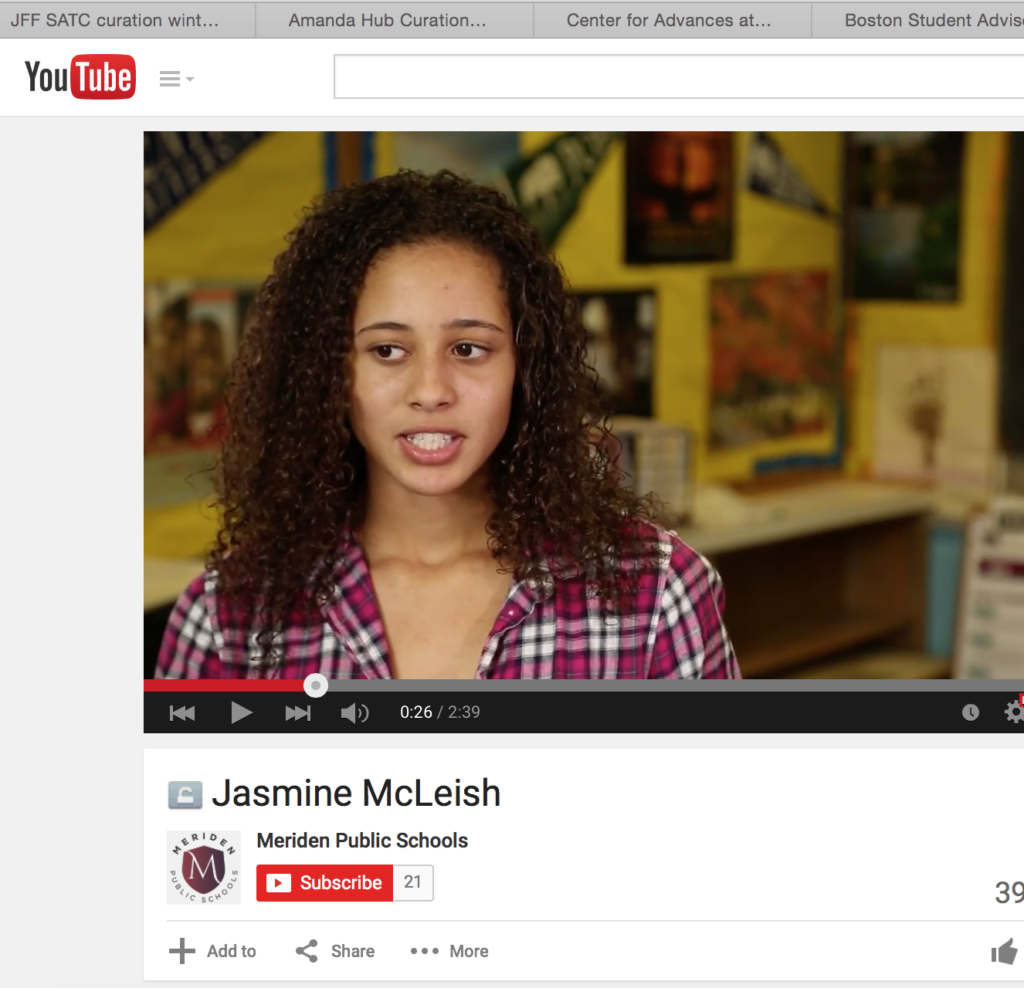
This video series highlights the experiences of students in Meriden Public Schools in Connecticut. The first video provides an overview of students’ thoughts on several key components of student-centered learning: collaboration, use of technology, choice, real world application, and voice/communication. The following nine video clips each feature a student. Students discuss the use of technology… Read More ›
EdSurge EdTech Index

This index includes hundreds of education technology products. Users can search products by filtering a number of categories including “audience,” “cost,” and “tech requirements.” The EdSurge EdTech Index provides overviews and reviews (based on interviews with educators) on a number of products. Source Organization: EdSurge Visit the Resource
First Ask, Then Listen: How to Get Your Students to Help You Teach Them Better, A Teachers Guide
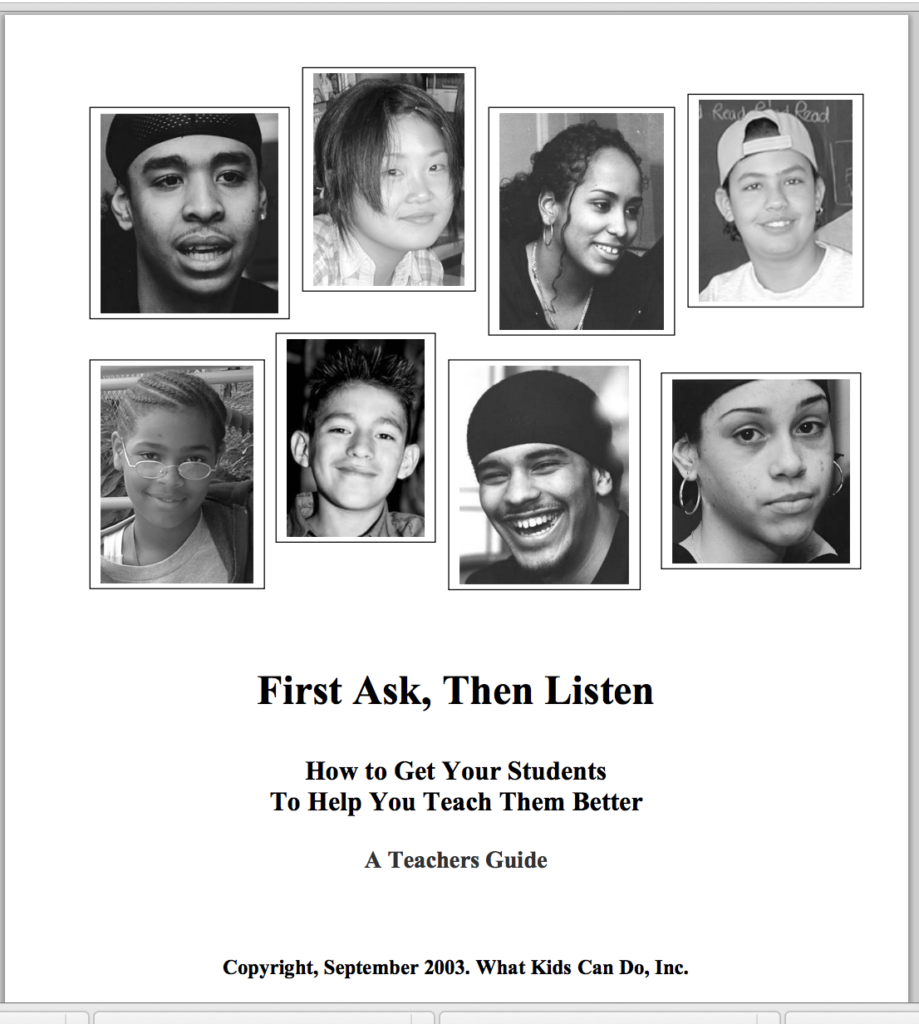
This short guide, compiled by What Kids Can Do researchers, features advice on how teachers can listen to students to enhance their teaching. It includes tips on structuring conversations with students, as well as the question prompts and exercises (usually questionnaires), used to gather research for the popular book Fires in the Bathroom: Advice for… Read More ›
Experiencing “Curricular Opportunities in the Digital Age”

In “Curricular Opportunities in the Digital Age,” a paper for the Students at the Center project, David Rose and I aim to describe how technology can be used to create more student-centered learning opportunities for diverse learners within a Universal Design for Learning (UDL) context. We describe how applying the principles of UDL—provide multiple means… Read More ›
Highlander Institute Awarded NMEF’s Integrated Learning Systems Grant
What is the formula for designing a statewide initiative to leverage technology for student-centered learning? Highlander Institute is testing out their plan for this over the next year and a half, thanks to the Nellie Mae Education Foundation’s (NMEF’s) Integrated Learning Systems grant. A nonprofit organization based in Providence, Rhode Island, Highlander Institute leverages… Read More ›
Achieve Webinar: College Faculty Weigh In- Are Students Ready for College and Career?

Join Achieve on June 25th from 4:00-5:00 p.m. EDT to unpack the results from the latest iteration of Achieve’s survey on student preparedness for college and career. This time, college faculty weigh in. Pollsters from Hart Research and Public Opinion Strategies will share findings from the nationwide poll of college faculty from both two- and… Read More ›
Implementing Competency Education in K-12 Systems: Insights from Local Leaders
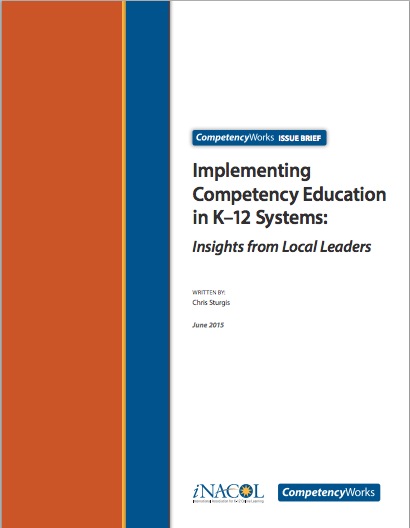
This report describes effective district implementation strategies to convert traditional, one-size-fits-all models of education into more personalized, competency-based learning environments to meet students’ needs. It highlights strategies to engage, motivate, and teach all students to proficiency and mastery, depicts shifts in instruction toward deeper learning and meaningful assessments for learning, while exploring models of distributed leadership and… Read More ›